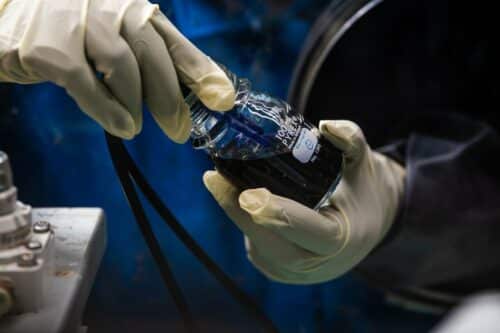Researchers at the Pacific Northwest National Laboratory have discovered β-cyclodextrin’s remarkable impact on flow battery technology, addressing the need for efficient and long-lasting energy storage in the grid.

In an unprecedented experiment, a widely used additive found in food and medicine has demonstrated its remarkable ability to enhance the capacity and lifespan of a cutting-edge, next-generation flow battery design.
Researchers from the Department of Energy’s Pacific Northwest National Laboratory have reported that the flow battery, tailored for efficient electrical grid energy storage, exhibited an impressive performance by retaining its energy storage and release capacity over a continuous year of charge and discharge cycles. The study revealed that using β-cyclodextrin, a sugar derivative, improves battery performance, increasing power by 60%. The battery cycled continuously for over a year until the tubing failed, with minimal capacity loss. This is the first flow battery experiment to achieve more than a year of continuous use. The β-cyclodextrin additive speeds up the electrochemical reaction in the flow battery, working while dissolved in solution.
What is a flow battery?
Flow batteries have two chambers filled with different liquids and store energy through an electrochemical reaction. They differ from solid-state batteries as they require continuous liquid circulation for electrolyte supply. Scaling up flow batteries allows them to serve as grid backup generators, supporting decarbonization strategies. They can be built at various scales, from lab bench to city-block sizes.
Why do we need new kinds of flow batteries?
Large-scale flow battery storage ensures grid stability during disruptions caused by severe weather or high demand. As renewable energy generation grows, the need for energy storage facilities increases to store excess power. Existing commercial facilities rely on expensive minerals like vanadium, prompting research for cost-effective, non-toxic alternatives using readily available materials.
A benign ‘sugar water’ sweetens the pot for an effective flow battery
β-cyclodextrin has improved the dissolution of fluorenol in the electrolyte and displayed unexpected catalytic properties. The team explained how the sugar additive accepts protons and facilitates electron movement during battery discharge. This advancement builds upon a previously patented flow battery design, making it suitable for scalability. The researchers are exploring smaller compounds similar to β-cyclodextrin and continue to enhance the system.
Reference: Ruozhu Feng et al, Proton-regulated alcohol oxidation for high-capacity ketone-based flow battery anolyte, Joule (2023). DOI: 10.1016/j.joule.2023.06.013






